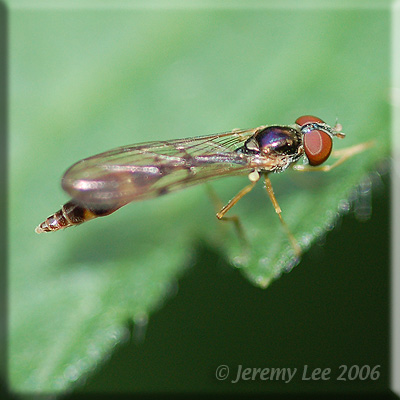
 |
|
Scientific Classifications explained » Amphibians » Ants » Aphids » Bees » Beetles » Birds » Bugs » Butterflies » Caterpillars » Damselflies » Dragonflies » Earwigs » Flies » Frog/Leafhoppers » Fungi » Galls » Grasshoppers » Harvestmen » Hoverflies » Lacewings » Ladybirds » Leaf Mines » Lichens » Mammals » Millipedes » Mosses » Moths » Sawflies » Slugs » Snails » Spiders » Trees » Wasps » Wild Flowers » Woodlice |
UK Nature > Hoverflies > Baccha elongata

Scientific Name: Baccha elongata Common Name: N/A Baccha elongata has a wing length of 4.5 to 8 mm and is a common hoverfly throughout the UK. It can be found in most districts by careful observation of sunny herbage along hedgerows or woodland margins, ride edges or in shaded spots under trees where it will often be found in dappled light. Nettle beds in sheltered, humid parts of woodland are particularly favoured by females and sweeping such areas will often produce specimens. Occasionally it will be seen hovering among low branches of bushes or trees and sometimes at flowers. The larvae are known to be predaceous upon a variety of ground-layer aphids. Adults are active April to November, peaking twice, in May and September. |
|